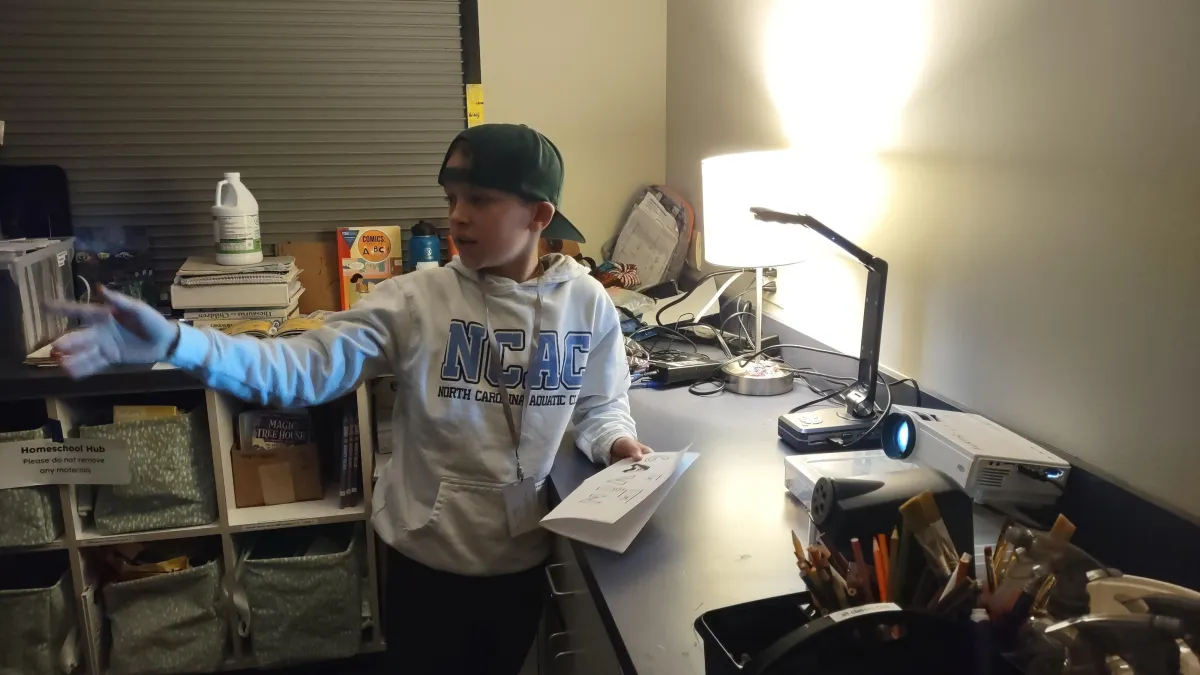Industry News

Creative Confidence Helping Kids Trust Their Inner Artist

Creative Confidence: Helping Kids Trust Their Inner Artist
Every child is born an artist. Give them a crayon, and they'll show you a world from their imagination—raw, colorful, and full of surprises. But somewhere along the way, many kids start to doubt their creative abilities. They begin to compare, to question, to erase. That's why nurturing creative confidence is one of the most powerful gifts a parent or caregiver can give.
Let’s explore how building creative confidence can spark more than just great art—it can unlock a child’s voice, identity, and courage.
What Is Creative Confidence?
Creative confidence is the belief that your ideas and expression matter—and that they’re worth exploring and sharing. It’s not about being “the best” artist in the room; it’s about trusting your instincts, embracing mistakes, and staying curious. For kids, this confidence plays a key role in problem-solving, emotional expression, and overall self-esteem.
Kids who feel creatively confident are more likely to:
Share their thoughts and feelings openly
Try new things without fear of failure
Develop resilience when things don’t go as planned
Think independently and value their unique perspectives
Why Do Kids Lose Their Creative Confidence?
There are a few common reasons:
Comparison Culture: With social media and constant visual input, even young kids can feel like their work isn’t “good enough.”
Over-Directed Learning: When creativity is confined to strict rules or templates, kids may feel there’s a “right” and “wrong” way to make art.
Fear of Mistakes: Many kids internalize the idea that a mistake means failure, instead of a stepping stone to growth.
So how do we shift that mindset?
1. Celebrate the Process, Not the Product
Instead of focusing on the final result, talk to your child about their process:
“Tell me about what inspired this?”
“What part was the most fun to make?”
“How did you figure out how to draw that part?”
This reinforces that their thinking and problem-solving are just as valuable—if not more—than what ends up on the paper.
2. Normalize Mistakes (and Even Make Some Yourself)
Let them see you doodle something imperfect. Share your own creative experiments that didn’t go as planned.
Say things like:
“Oops! That didn’t turn out how I thought—but I kind of like it better now!”
“Sometimes the coolest art happens when I mess up.”
This helps children let go of the pressure to be perfect and opens them up to experimenting.
3. Create a Judgment-Free Zone
Give them a dedicated space to create that’s all about freedom. No grades, no critiques, just play. That might be:
A sketchbook that no one else sees
A collage wall that gets rearranged over time
A digital app where they can try new art styles without pressure
Also, avoid fixing their work—even when asked. Instead of drawing it “right,” guide them with questions:
“Hmm, how do you want that to look? What would make it feel more complete to you?”
4. Introduce Diverse Artistic Role Models
Show your child that there’s no one way to be an artist. Highlight artists from different cultures, abilities, and creative paths—fine artists, muralists, comic book illustrators, fashion designers, 3D animators.
Include both famous and local creatives, especially those who’ve embraced their quirks and made it part of their style. This shows kids they don’t have to fit a mold—they can create their own.
5. Give Their Work Purpose
Kids light up when their art makes someone else happy. Let them:
Make greeting cards for family
Design stickers for their water bottles
Create custom art for their bedroom walls
Turn their drawings into T-shirts or prints (there are awesome services for this!)
Seeing their art come to life in real ways builds pride and confidence in their voice.
6. Talk About Creativity Beyond Art
Creative confidence isn’t just for drawing. It helps with:
Writing a story
Building a Lego masterpiece
Solving a tricky puzzle
Coming up with a new game or dance
Point out how their creativity shows up in everyday life: “That’s such a creative way to build your fort!” or “I love how you solved that problem—super imaginative!”
Final Thoughts: Raising Brave Creators
Helping your child trust their inner artist is about more than glitter and glue. It’s about helping them see their ideas as valuable. It’s showing them that art is not about being perfect—it’s about being honest, curious, and brave.
Whether they become a painter, an engineer, a storyteller, or a chef, creative confidence will serve them their entire lives.
So grab some markers, clear off a little table space, and let them get messy. Your encouragement might be the spark that helps them believe in themselves for years to come.
#a3dpyo #CreativeConfidence #KidsArt #ParentingTips #RaisingCreators #ImaginationMatters #ArtForKids #MistakesWelcome #BraveMakers

© Copyright 2023. Mandi St. Onge. All rights reserved.

